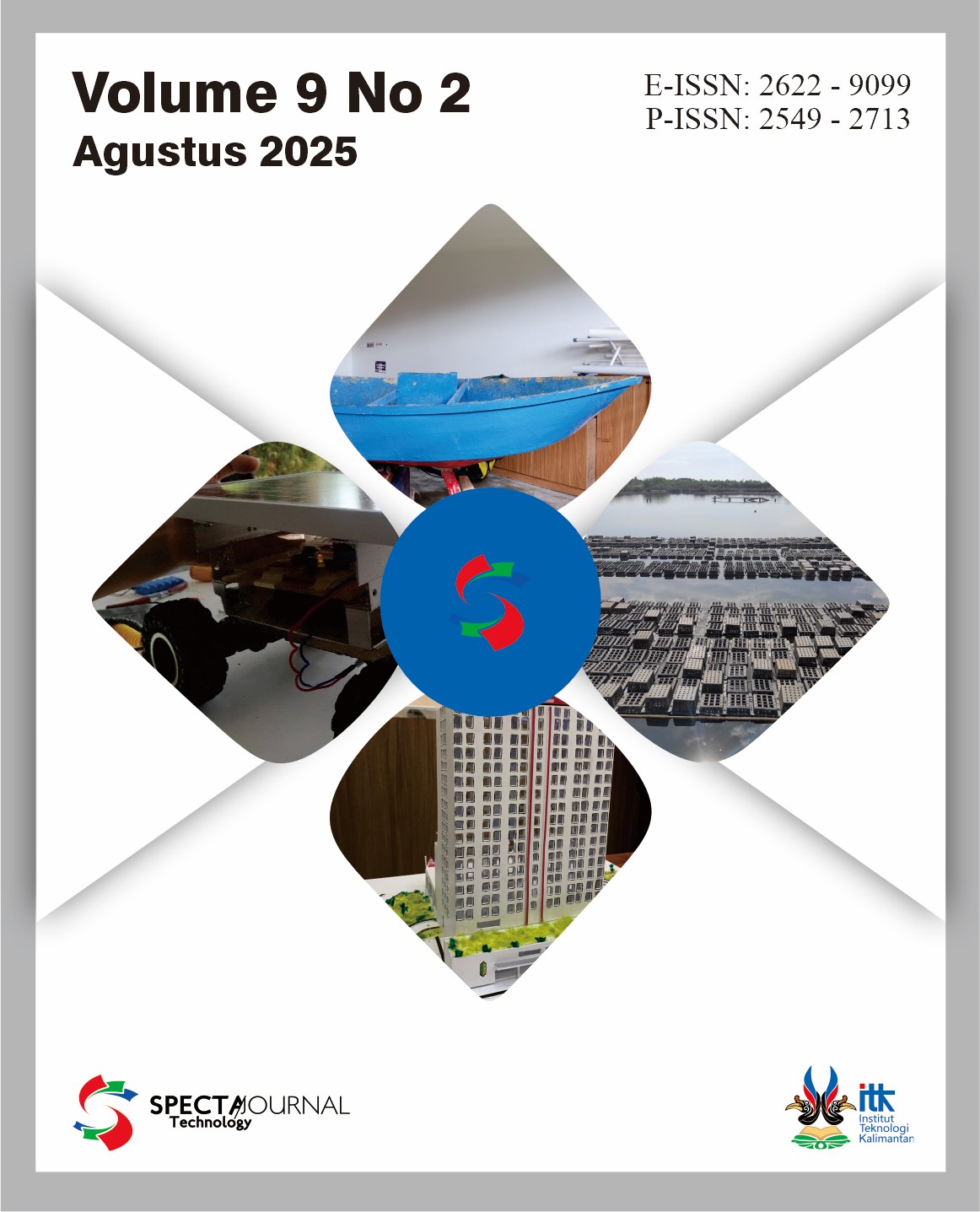Environmental Impact Reduction Strategy for Drinking Water Treatment Plants in Balikpapan City Using Life Cycle Assessment (LCA) Method
DOI:
https://doi.org/10.35718/specta.v9i2.8481481Keywords:
Environmental Impact, gate to gate, DWTP, LCA, SimaProAbstract
The clean water production process must be carried out effectively without harming the environment. The Regional Drinking Water Company (PDAM) Tirta Manuntung Balikpapan City produces clean water through several Drinking Water Treatment Plants (DWTP) such as Kampung Damai and Kilometer (KM) 8. Potential negative impacts can arise from the use of chemicals, processing methods and units, as well as high-power equipment. The Life Cycle Assessment (LCA) method can be used to systematically calculate the environmental impacts of an activity's input, process, and output. This study aimed to calculate the environmental impacts due to the production process at Kampung Damai DWTP and KM 8 DWTP of Balikpapan City using the LCA method, as well as formulate strategies to reduce negative impacts. The principle of this study was to calculate impacts using the ReCiPe 2016 model (midpoint H), based on software (SimaPro), with gate-to-gate data coverage (from the intake unit to the reservoir). The study's results found that every 1 m³ of production at Kampung Damai DWTP resulted in impacts in the form of human carcinogens (0.0179 pt), freshwater ecotoxicity (0.00329 pt), and freshwater eutrophication (0.00266 pt). Meanwhile, at KM 8, DWTP resulted in human carcinogenic impacts of 0.026 pt, freshwater ecotoxicity of 0.04 pt, and marine ecotoxicity of 0.03 pt. Alternative strategy to mitigate potential environmental impacts can be implemented through the substitution of aluminum sulfate (Al2SO4) chemicals with Poly Aluminum Chloride (PAC), which reduces human carcinogenicity by 28%, freshwater ecotoxicity by 12%, and freshwater eutrophication by 4% at Kampung Damai DWTP. Furthermore, substitution of chemicals with PAC and low-power electrical equipment can reduce human carcinogenicity by 8.38%, freshwater ecotoxicity by 14.09%, and marine ecotoxicity by 12.13% at KM 8 DWTP.
Downloads
Published
How to Cite
Issue
Section
License
Copyright (c) 2025 Muhamad Nur Ibnu Luthfi Saud, Haifa Cahya Nabila Almunawar, Intan Dwi Wahyu Setyo Rini, Tasya Mirza Ratu Pattisahusiwa, Rizka Lestari

This work is licensed under a Creative Commons Attribution-NoDerivatives 4.0 International License.
Authors retain copyright and grant the journal right of first publication with the work simultaneously licensed under a Attribution-NoDerivs 4.0 Generic(CC BY-ND 4.0) that allows others to share the work with an acknowledgement of the work's authorship and initial publication in this journal.




















